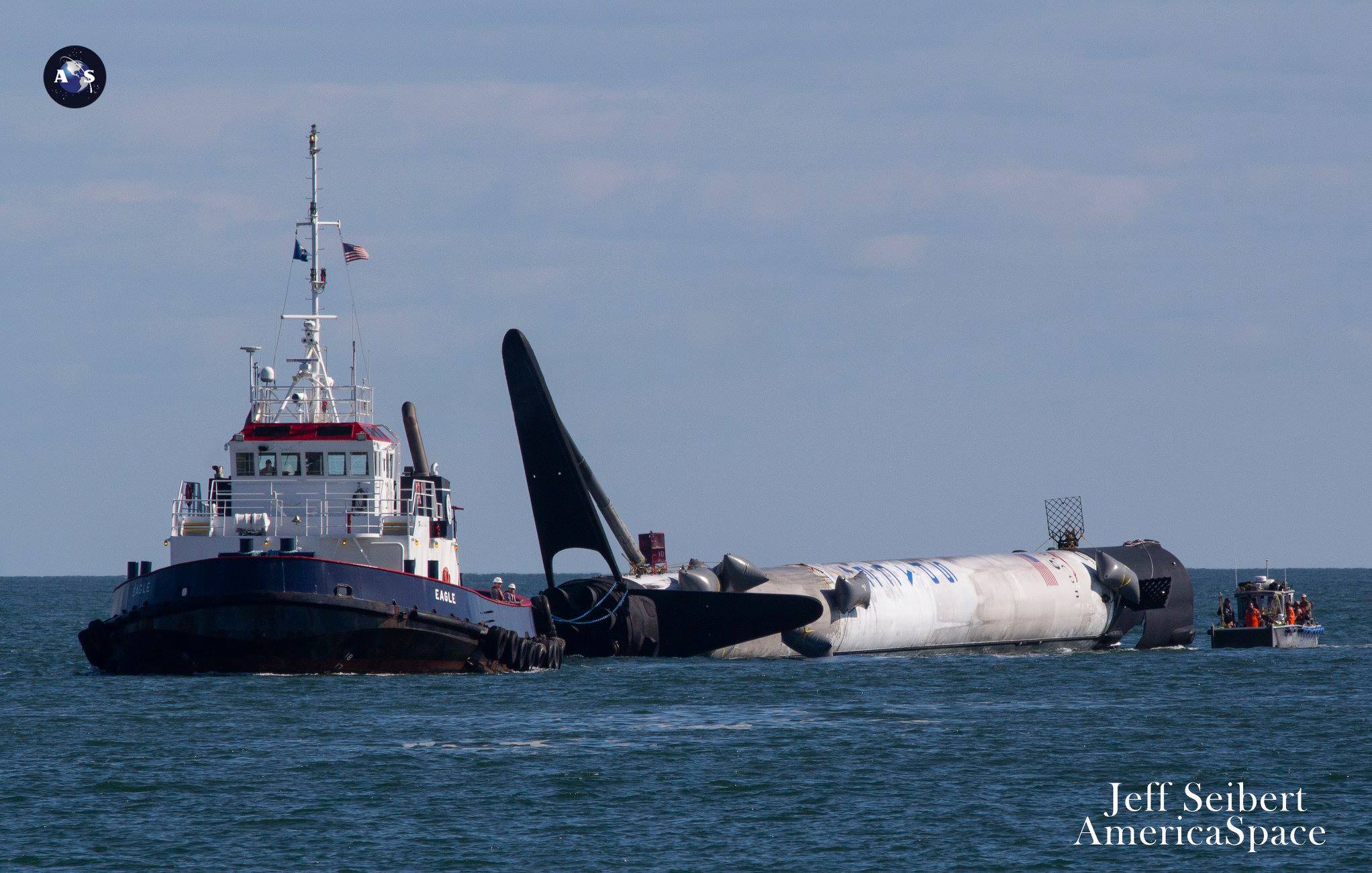
ORIGINAL REPORT Dec 5, 2018: While Dragon CRS-16 heads to a Saturday rendezvous with the International Space Station (ISS), laden with over 5,600 pounds of science experiments and supplies, SpaceX has been busy working to secure their floating Falcon 9 rocket, which launched Dragon flawlessly but missed its landing target back on Cape Canaveral Air Force Station’s ‘Landing Zone-1’ (LZ-1).
– Read our FULL STORY on the launch and mission HERE!
In the 24 hours since, numerous support vessels and crews were called in to help safe and secure the booster for safe towing and recovery, while the U.S. Coast guard anchored nearby ensuring mariners were clear of the wayward rocket.
4K AERIAL VIDEO: Alan Walters / AmericaSpace
Following launch and first stage separation on Dec. 5, Falcon began its autonomous descent back to Earth, aiming for Landing Zone-1, a few miles south of where it launched from (SLC-40). But somewhere along the way the rocket suffered a malfunction, causing it to go into a high-rate spin and abort LZ-1, aiming for an ocean landing instead.
“Grid fin hydraulic pump stalled, so Falcon landed just out to sea,” said Elon Musk on Twitter. “Appears to be undamaged & is transmitting data. Recovery ship dispatched. Engines stabilized rocket spin just in time, enabling an in-tact landing.”
“We have a safety function onboard to make sure the rocket avoids land if anything onboard goes wrong,” said Hans Koenigsmann, SpaceX Vice President of Build and Flight Reliability. “As much as we are disappointed, it shows that the system knows how to recover from certain malfunctions.”
Engines stabilized rocket spin just in time, enabling an intact landing in water! Ships en route to rescue Falcon. pic.twitter.com/O3h8eCgGJ7
— Elon Musk (@elonmusk) December 5, 2018
The rocket, which landed probably only a couple thousand feet offshore (despite Hans saying he believes it was 2 miles), automatically targeted a landing point in the water to keep the surrounding Cape safe.
If you can’t make it, ditch in the ocean.
Falcon 9 does have an Autonomous Flight Termination System too (AFTS), noted by Hans in the mission’s post-launch press conference, but self-destructing the rocket is a last resort. It’s safer to ditch in the ocean, than to blow up a rocket at altitude and risk hurting people or damaging property on the ground. The AFTS actually deactivates a couple minutes before landings for just that reason.
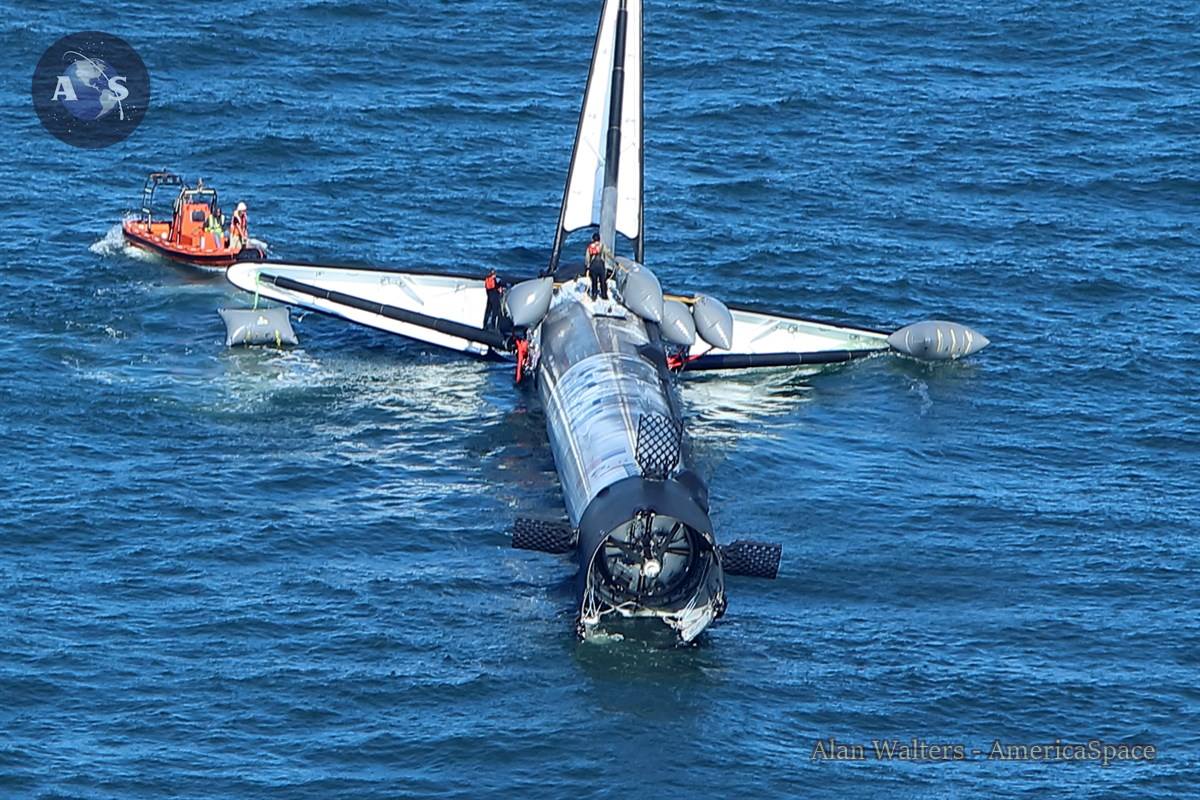
It’s easy to assume, that had the rocket been over solid ground, it probably would have stuck the landing.
Over the 24 hours since splashdown the booster slowly drifted south-east, but remained within view just a few miles off Cape Canaveral’s beaches. Support ships ‘Eagle’ and ‘Go Quest’ kept with the rocket overnight, keeping mariners out of harm’s way. Throughout today (Dec. 6), divers from Logan Diving and Salvage were called on scene to support the recovery effort, while the Coast Guard kept watch nearby.

“It sounds like they are using slings,” said Twitter user @julia_bergeron, who was monitoring radio chatter, also tweeting that she overheard, “Logan, I think your diver is hollering at you from on that rocket.”
On our orbits of the rocket, the interstage clearly appeared to have busted on impact.
While it’s unclear how exactly divers and support teams secured the rocket, radio chatter monitored by Twitter user @profpacisindicated SpaceX is ready to bring their booster into Port Canaveral, pending approval from the Harbormaster and Coast Guard.
And off sundown the booster was still offshore, but more radio chatter between SpaceX and the Port indicated a 6:30am EST arrival into Port. SpaceX’s floating landing Autonomous Spaceport Drone Ship OCISLY, currently docked in Port, is being repositioned to make way for the floating Falcon.
————————————————————————-
– UPDATE: SpaceX is expected to tow the rocket into Port around 11:00am EST Friday.
UPDATE 3:20pm EST Dec 7:
- The rocket is now docked in Port Canaveral, next to SpaceX’s Autonomous Spaceport Drone Ship (ASDS). Below are photos from both our aerial scouting offshore on Dec 6 (thanks to Cocoa Beach Helicopters for the lift), and views of the booster arriving in port today.
BELOW: Falcon being towed into Port Canaveral Today:

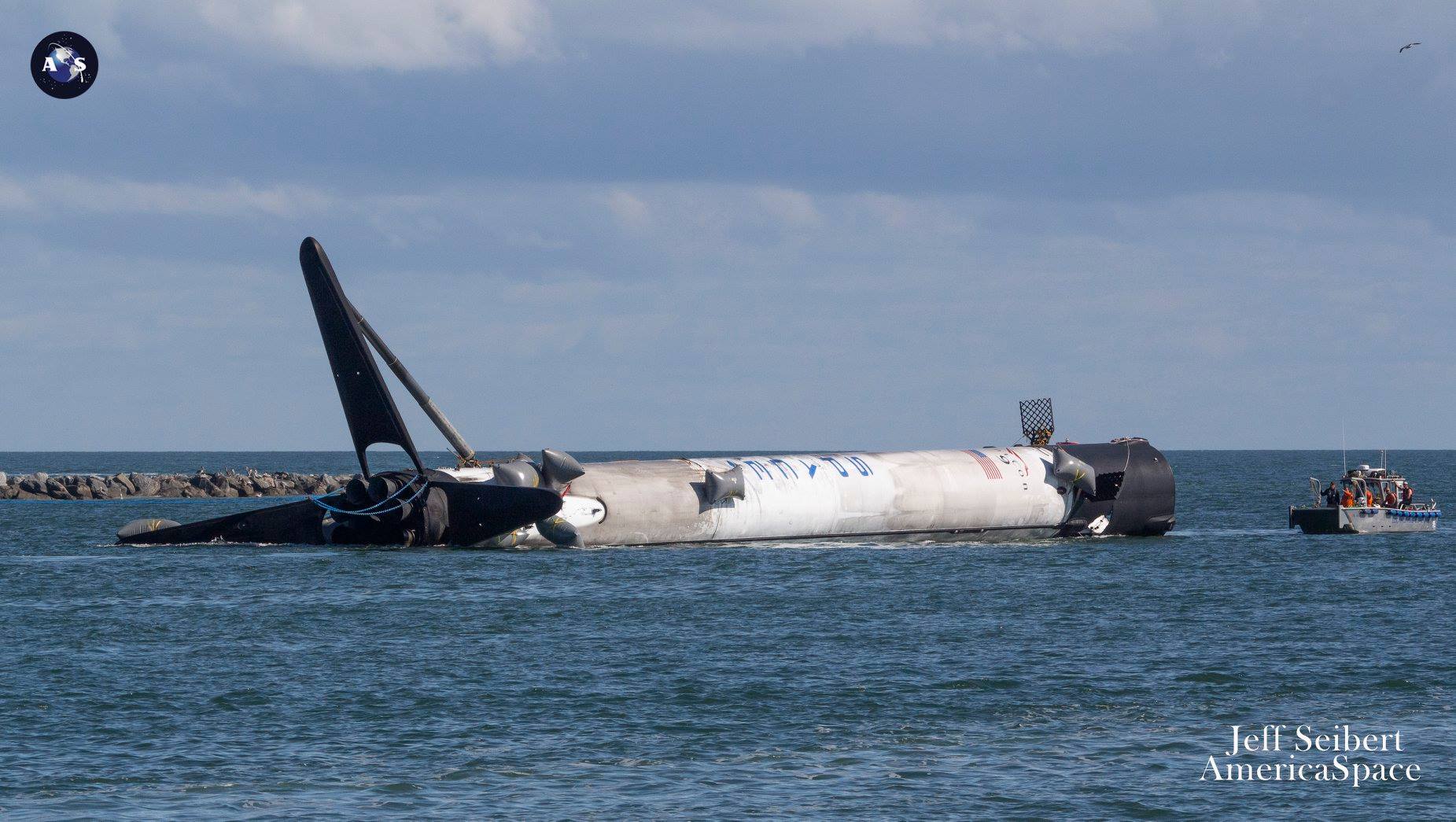
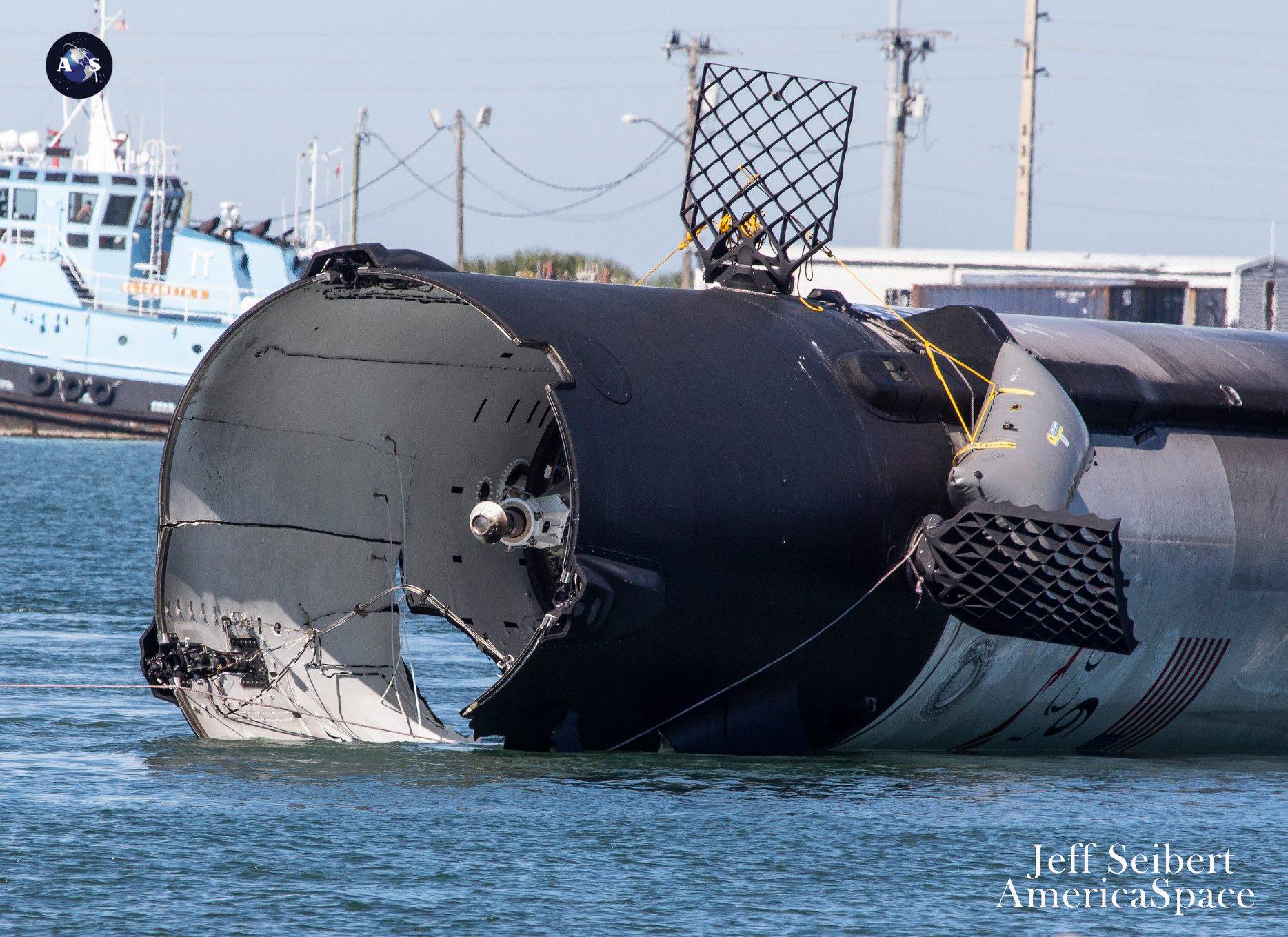
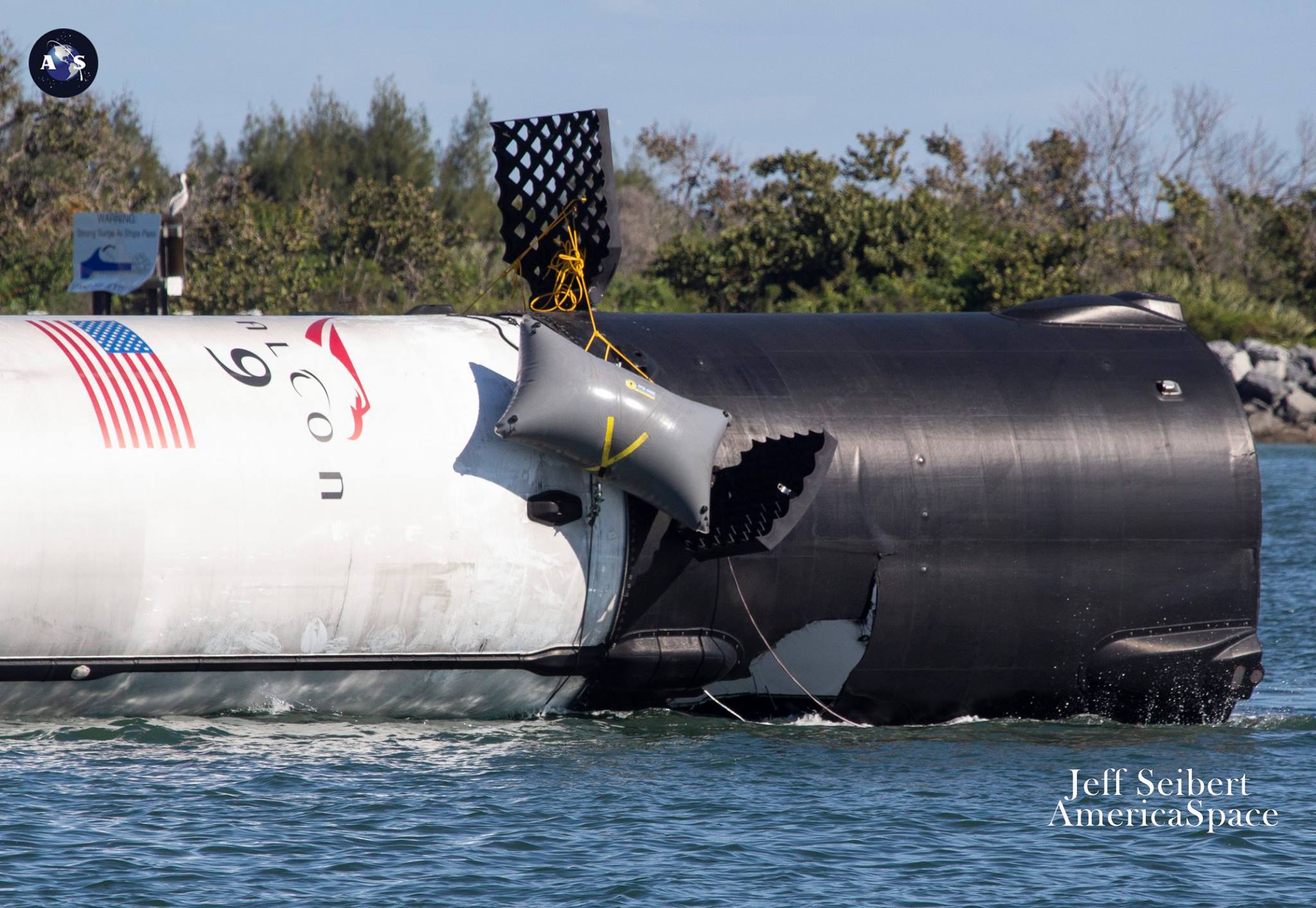
From the twitter world:
https://twitter.com/JRexLee/status/1071096939993841664
https://twitter.com/julia_bergeron/status/1071086504523522048
GREAT VIDEO of the @SpaceX booster as it is being towed into Port Canaveral.#portcanaveral #spaceport pic.twitter.com/x38isTNDvq
— Port Canaveral (@PortCanaveral) December 7, 2018
FOLLOW AmericaSpace on Facebookand Twitter!
.






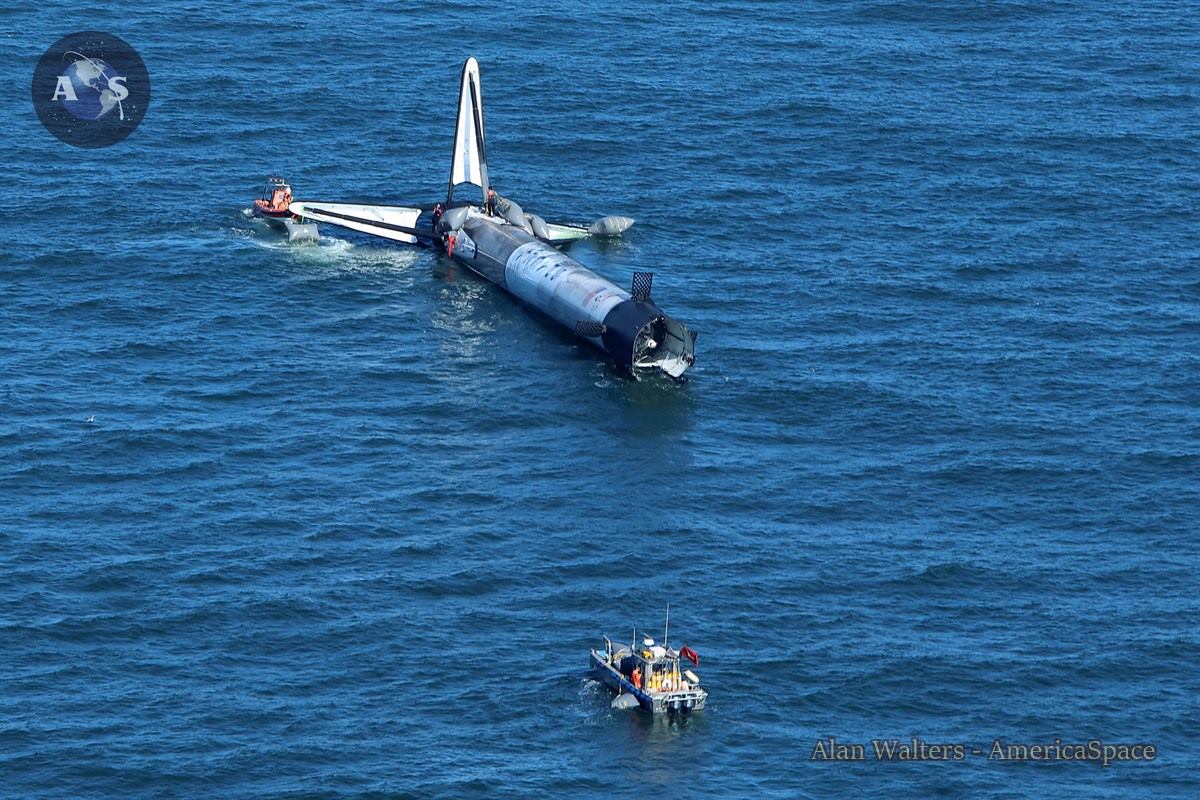
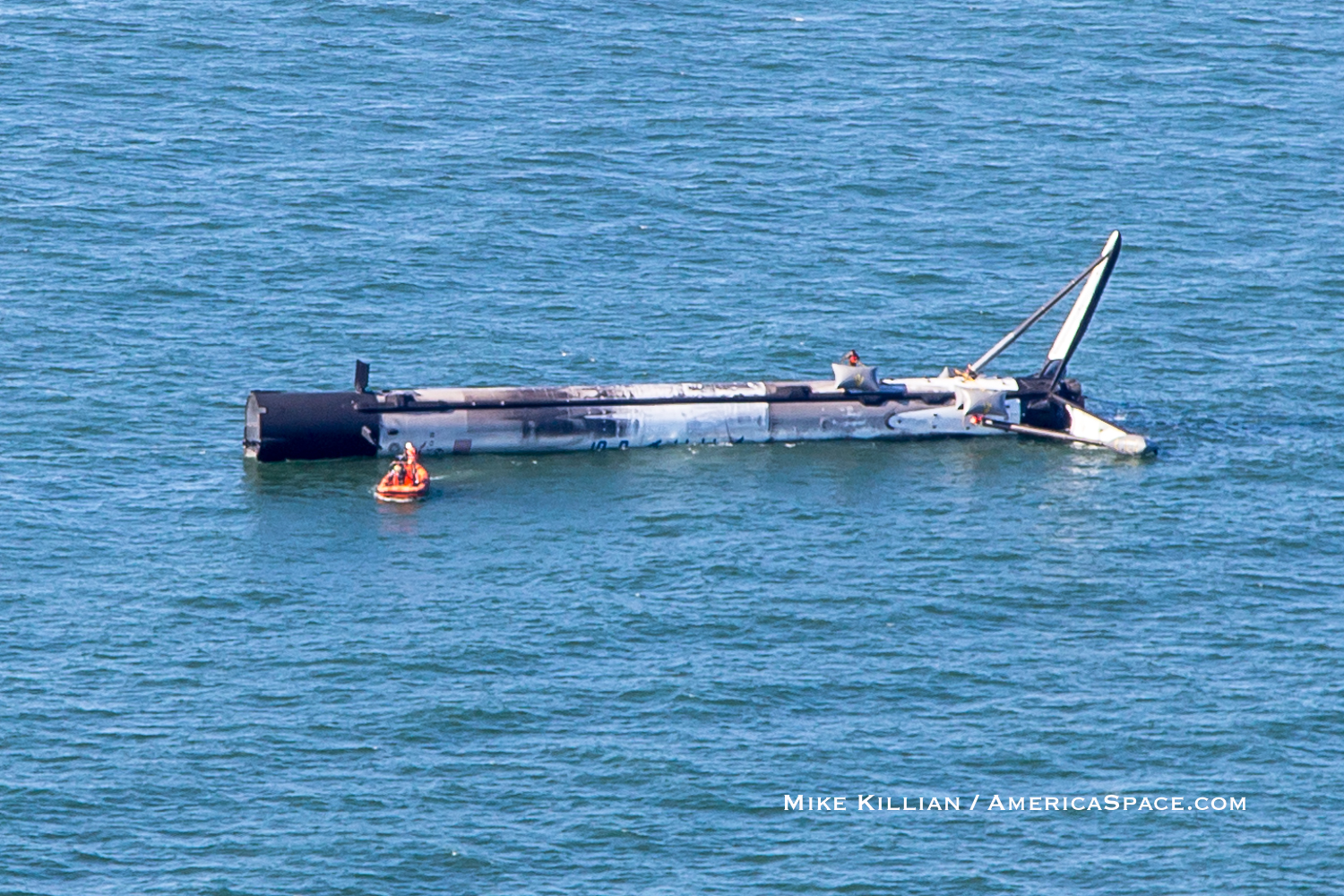
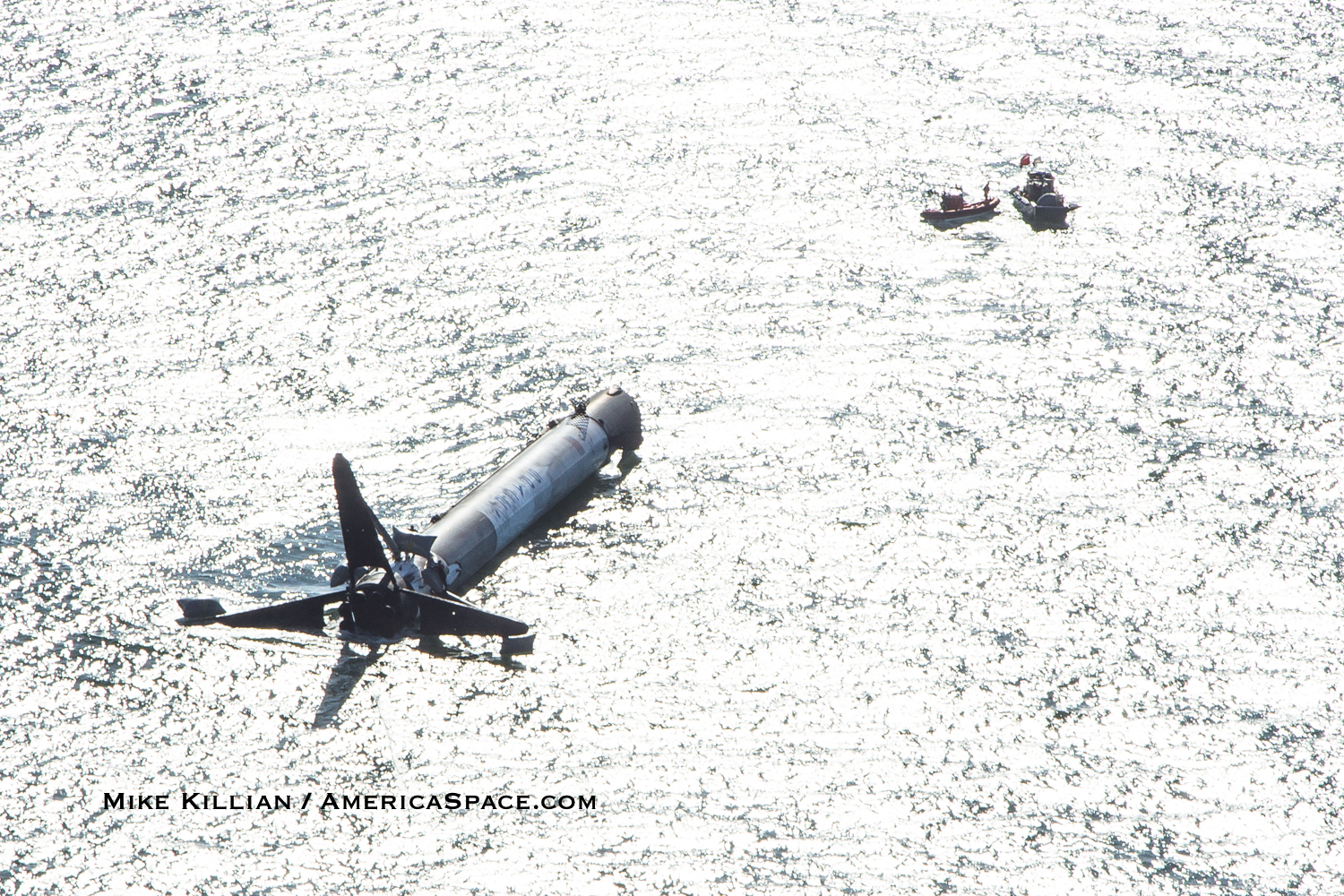
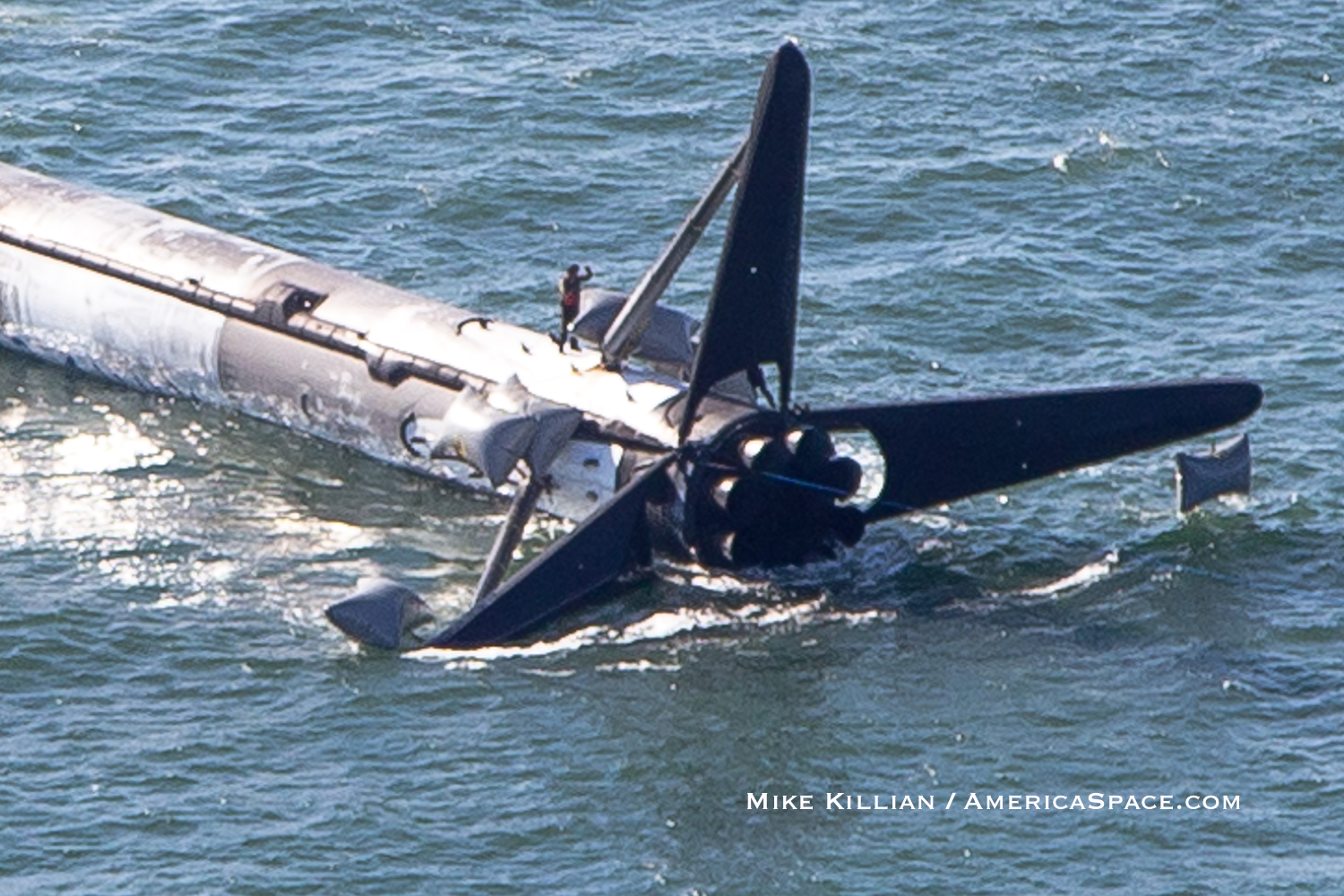

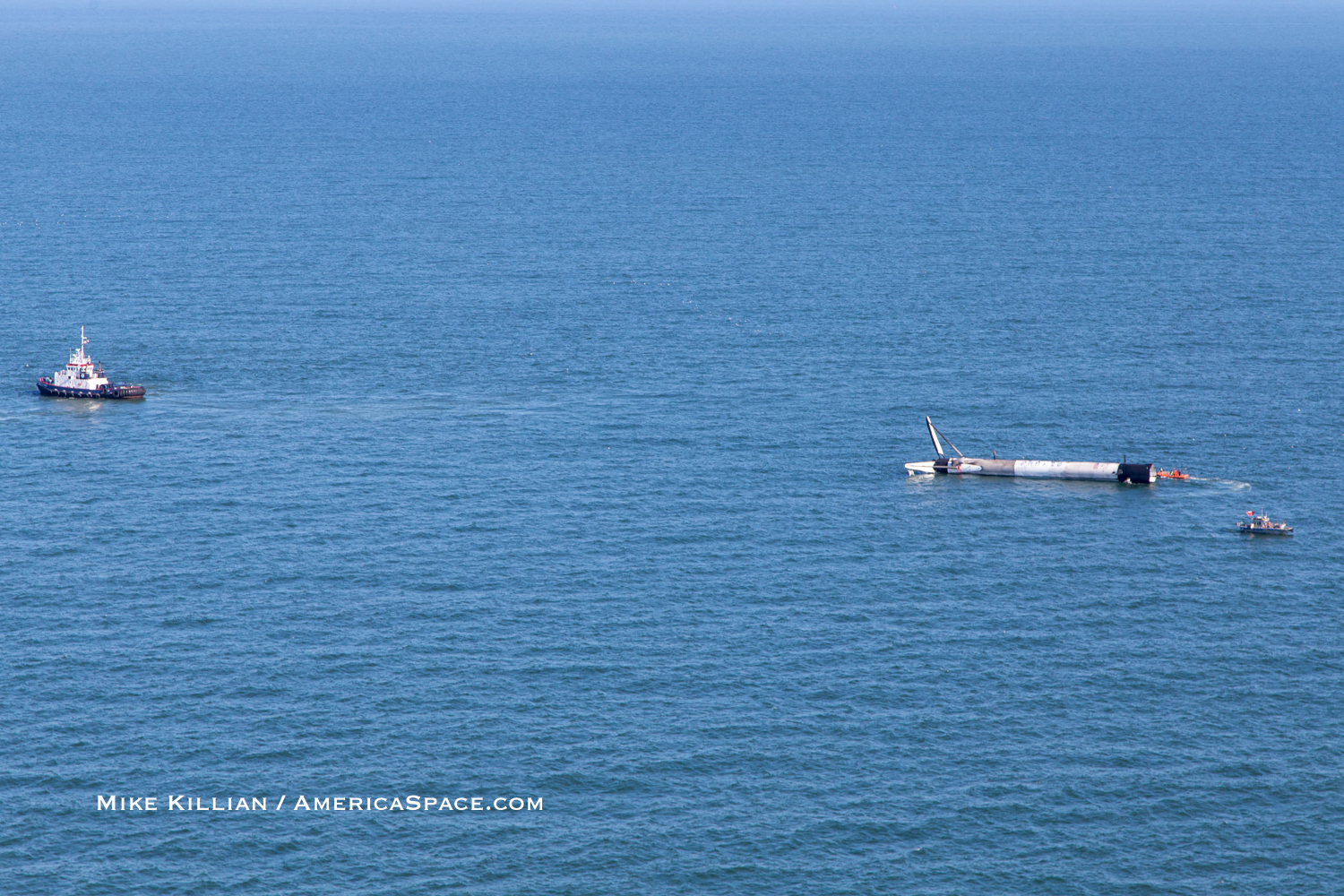


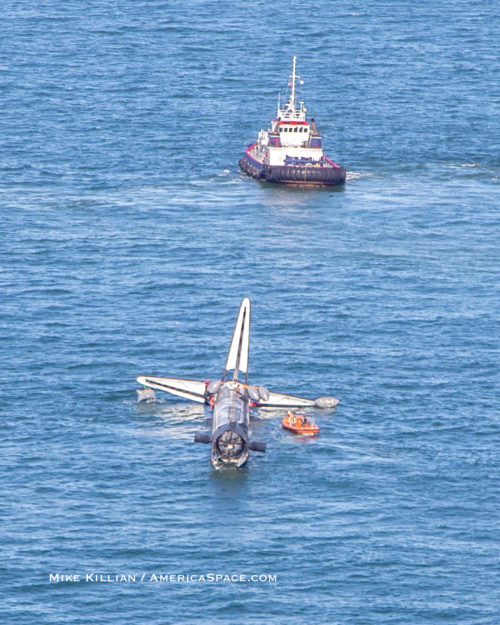
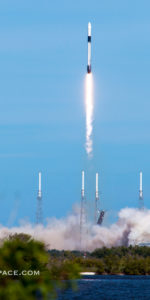
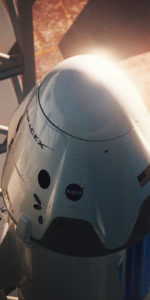
Nice photos and coverage on scene.
Will it be used again?? you